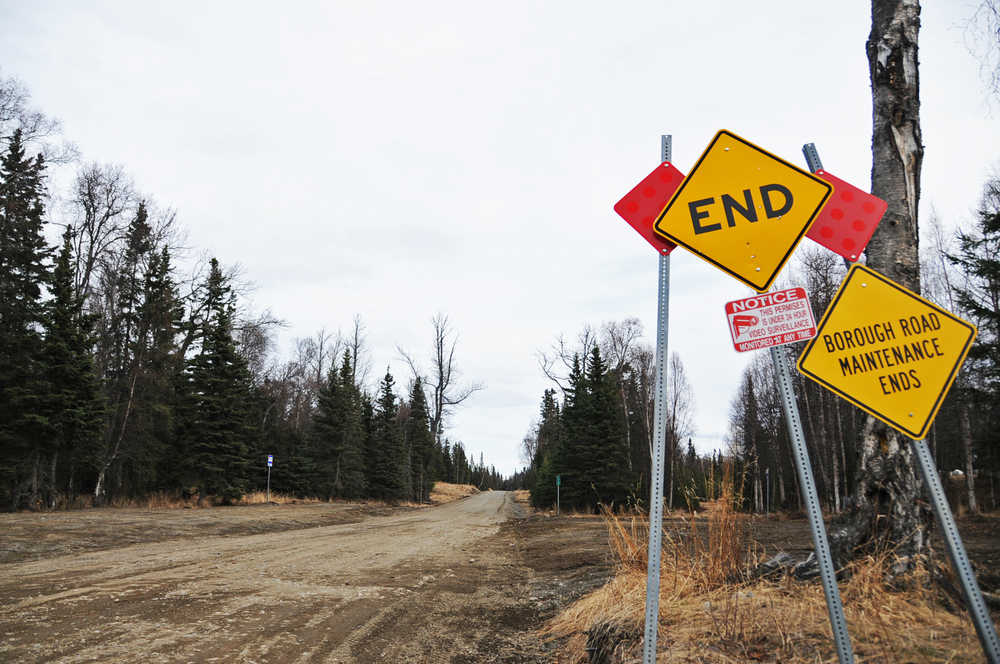Plans are moving forward for the long-awaited Kenai Spur Highway extension past the current terminus at Captain Cook State Recreation Area.
The road would provide access to the Gray Cliff subdivision, which can currently only be reached by a dirt four-wheeler access trail. The Kenai Peninsula Borough administration has been working on a road extension since 1998, but the planned 27-mile extension proved to be cost-prohibitive. Apache Corporation, which was exploring for oil and gas in the area, announced plans to pick up the project in 2014, but the company’s withdrawal from Alaska operations in early 2016 sent the project into hiatus again.
However, Apache donated much of the environmental work it had done on the road extension to the borough, so the borough administration has been working on a roadmap to use long-neglected funds to finally build the road. To access the approximately $6 million in federal funds dedicated to the project, the borough has to contribute a 20 percent match, but Western Federal Lands, a division of the Federal Highway Administration, decided the borough can put the approximately $1.2 million value of Apache’s donated work toward the match.
The project has been scaled back significantly — currently, the borough plans to build an approximately 7.5-mile gravel road ending at Otter Creek, reaching most of the Gray Cliff subdivision.
However, it may not even go that far, depending on how far the borough can stretch the approximately $5.1 million left of the original $6 million it received from the federal government. Kenai Peninsula Borough Mayor Mike Navarre’s chief of staff Paul Ostrander, who has been coordinating the project for the mayor’s office, said the plan is to build as much of the road as possible.
“The reality is the borough is going to be responsible for any cost overrun,” he said. “We don’t want to have to cut a check for this work. We want to be able to structure this in a way that we’re able to built a maximum amount of road.”
The mayor introduced an ordinance approving the construction and appropriating the $5.1 million from the U.S. Department of Transportation at the assembly’s Oct. 25 meeting. The Kenai Peninsula Borough Assembly will hear and vote on it at the Nov. 22 meeting.
At this point, the borough doesn’t have to put in a dime to meet the math — the borough has documented approximately $1.3 million in-kind contributions, surpassing the required match amount, according to a memo to the assembly from Henry Knackstedt, borough roads engineer.
“A significant amount of the match contribution was provided by the initial project design and permitting completed by the Apache Alaska Corporation,” he wrote. “Apache donated the project studies, designs, permitting and other relevant products by way of (an assembly resolution).”
Western Federal Lands was helpful in identifying what could count as an in-kind donation, and the final amount ended up being a collection of different agencies’ work products, including borough work and bridges over streams built by the Kenai Watershed Forum, though Apache’s donation comprised the largest portion, Ostrander said.
The project hinges on obtaining a categorical exclusion for the environmental work, though. A categorical exclusion, granted by the U.S. Environmental Protection Agency, eliminates the need for the costly environmental assessment and Environmental Impact Statement process based on the type of land the project will impact. Western Federal Lands is currently working on the environmental review, which should be done by the end of the year, Ostrander told the borough assembly at an Oct. 25 finance committee meeting.
The Western Federal Lands official who coordinates the National Environmental Protection Act requirements has said the project looks like it will qualify for the categorical exclusion, but there remain some issues to work out, like the Leaf Creek watershed. The road would cross the creek, which is a salmon-bearing stream in the state’s Anadromous Waters Catalog. However, depending on the mitigation work the plans entail, conditions could actually improve there, Ostrander said. Some of the work included in the documented donated work from the Kenai Watershed Forum included a bridge the group built there, he said.
“Rather than allowing the four-wheelers to drive through the creek, they build a bridge over it,” he said.
The assembly will consider the ordinance at its Nov. 22 meeting.
Reach Elizabeth Earl at elizabeth.earl@peninsulaclarion.com.

